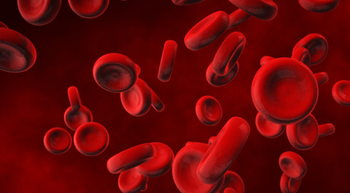
Consistent Monitoring Is Key Post Endocrine Therapy in HR+, HER2– mBC
For patients who have progressed on endocrine therapy, consistent monitoring of blood counts and biomarker testing informs treatment sequencing.
Episodes in this series

When treating patients with hormone receptor (HR)–positive, HER2-negative metastatic breast cancer in the second line of treatment following progression and the development of an ESR1 mutation on prior endocrine therapy, oncology nurses and advanced practice providers (APPs) should continually monitor patients’ complete blood counts (CBC) and take their medical history into account when deciding on the next line of therapy, according to Katie Newlin, RN, MSN, APN-BC, an adult nurse practitioner at Washington University Physicians in St. Louis, Missouri.
Following a Community Case Forum with Oncology Nursing News, Newlin, who moderated a discussion on second-line treatment for the aforementioned patient population with her peers at Indiana University Health Simon Cancer Center in Indianapolis Indiana, emphasized the importance of consistent monitoring and awareness of a
As she and her peers agreed, sequencing treatment following progression on initial endocrine therapy is determined by the presence of comutations and details of a patient’s history such as diabetes or abnormalities in their CBCs. Additionally, Newlin stressed that transparency about potential adverse effects and dose modifications ensures that a patient is as aware as possible of their options and expectations going into treatment.
Transcript
Everybody had the same mentality where you go back and look through patients’ past medical history. You want to identify any comorbidities that they may have. Additionally, when you’re looking and doing the comprehensive biomarker testing, you’re looking not just for 1 mutation, you’re looking for multiple mutations.
We know that endocrine resistance comes with the chance of multiple mutations that are noted, and so [we try] to identify which medications may be better tolerated with somebody who has multiple comutations, and base [our treatment decision] on what their history shows. For instance, if someone has an uncommon or a complicated course with diabetes, we know that there are some medications with PIK3CA mutations that can really alter high blood sugars or hyperglycemia, and we want to make sure that we’re avoiding those to try to keep those patients safe and try to offset any potential side effects that they may have.
Another takeaway was obtaining baseline cholesterol levels, triglycerides, liver functions, [overall obtaining their complete blood counts]. We’re monitoring patients’ baseline labs and monitoring them monthly or every couple months, seeing those patients and having the conversations with them, and just having open lines of communication so that they’re able to identify potential side effects and what they may be. We must
This transcript has been edited for clarity and conciseness.
Newsletter
Knowledge is power. Don’t miss the most recent breakthroughs in cancer care.










































































































